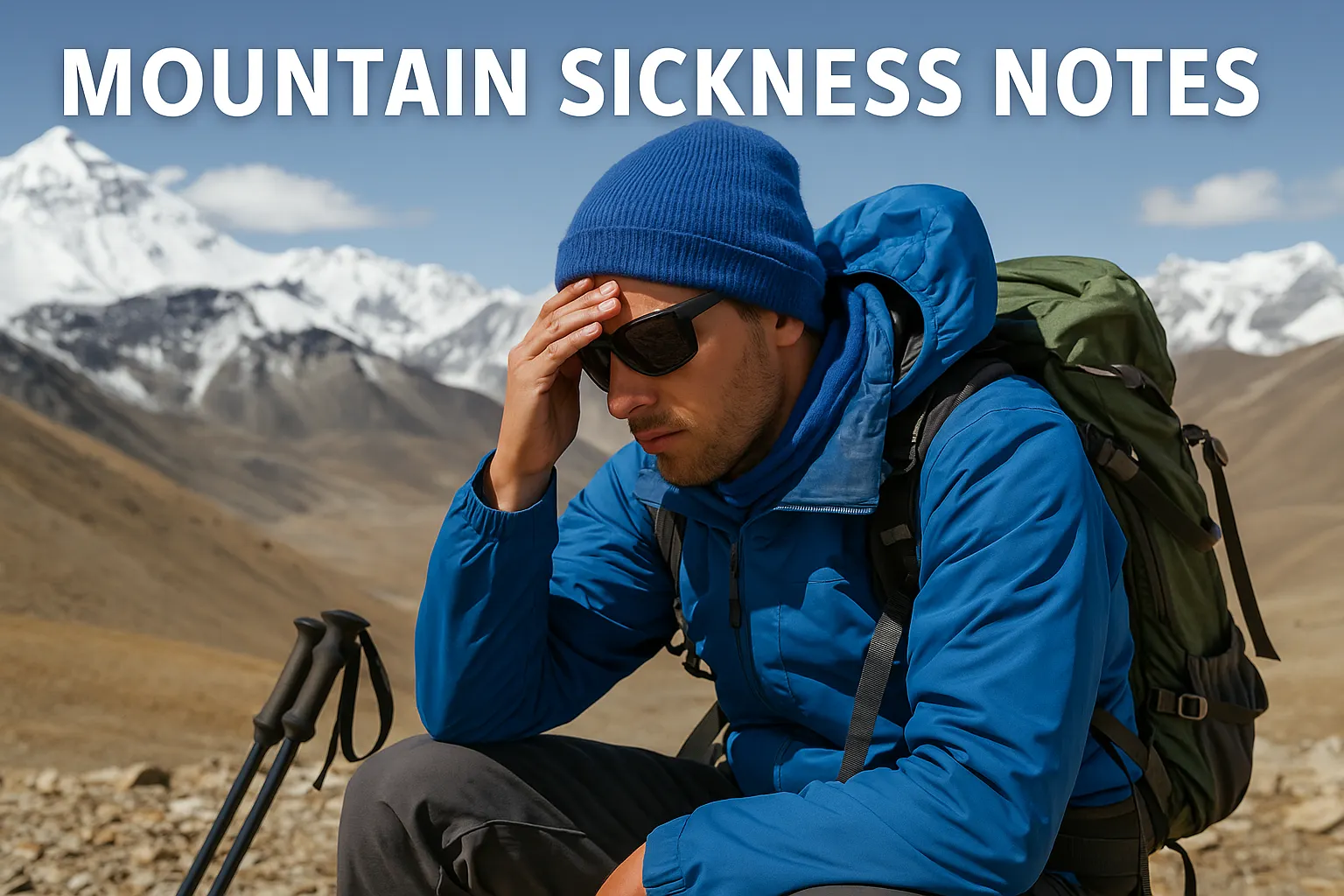Understanding Mountain Sickness: A Guide for High-Altitude Travel
What is Mountain Sickness?
Mountain sickness, or Acute Mountain Sickness (AMS), can occur when your body struggles to adapt to higher altitudes with lower oxygen levels. It's a common challenge for travellers heading into mountainous regions, especially above 2,500m. Symptoms can range from mild headaches and fatigue to more serious complications if left unmanaged.
What Causes Mountain Sickness?
As elevation increases, atmospheric pressure drops and oxygen becomes scarcer. This change puts stress on the body, often resulting in:
- Reduced oxygen delivery to tissues
- Faster heart rate and breathing
- Fluid buildup in the lungs or brain (in severe cases)
Rapid ascents without acclimatisation are a major risk factor.
Who Is More Prone to Mountain Sickness?
Some people are more likely to experience mountain sickness, particularly those who:
- Ascend too quickly without gradual acclimatisation
- Have pre-existing heart or lung conditions
- Have a personal history of AMS
- Are physically unfit or carry excess weight
- Are children or older adults with reduced adaptability
Who Should Avoid Travelling to Tibet?
Tibet’s average altitude sits around 3,600m, which can be a challenge for travellers with certain health conditions. It's best to avoid high-altitude travel if you have:
- Severe heart or lung disease
- Uncontrolled high blood pressure or diabetes
- High-risk or complicated pregnancies
- Recent head or spinal injuries
- Severe anemia or chronic blood disorders
Always consult a doctor before planning a trip to high elevations.
How to Reduce the Risk of Mountain Sickness
Planning ahead is the best prevention. Here are some helpful tips:
- Ascend gradually – Allow your body time to adapt.
- Stay at lower altitudes first – Spend a few days acclimatising before going higher.
- Hydrate well – Drink plenty of water and avoid alcohol.
- Listen to your body – Rest if symptoms appear. Descend if they get worse.
- Consider medications – Some travellers take preventative medicine after medical consultation.
Common Supplements and Medications
- HongJingTian (红景天) – A traditional Chinese herb often used to support altitude adjustment. Some travellers find it helpful, though scientific backing is limited.
- Diamox (acetazolamide) – A prescription medication that helps the body acclimatise by stimulating breathing. Side effects may include tingling, taste changes, or allergic reactions.
Always speak with a medical professional before taking new supplements or medication for high-altitude travel.
Final Thoughts
High-altitude travel offers incredible views and life-changing experiences, but it also requires careful planning. Whether you're visiting Tibet or trekking in Nepal, understanding mountain sickness helps you stay safe and enjoy the journey.
Join the Follow The Aurora community as we continue to explore breathtaking destinations responsibly and share knowledge that helps everyone travel smarter.

